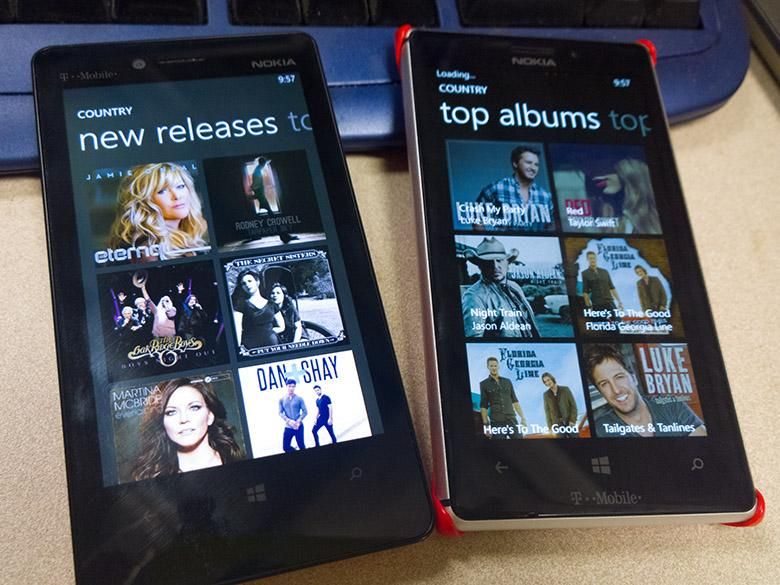You may have seen some AdDuplex stats about Windows 10 Mobile growth and Windows Phone lately. It turns out, Windows 10 Mobile is being used by only about 16% of Windows Phone & Windows Mobile users. The whole Windows on phones market is pretty small to begin with these days, but if 84% of your customers are either choosing to stick with the older operating systems or are stuck there with no migration path, then it’s safe to say something went wrong. I used the word “migration” there instead of “upgrade”, because Windows 10 Mobile isn’t really an upgrade from Windows Phone 8.1. I’ve been a fan of Windows Mobile, Pocket PC, Windows CE, etc. since about 1998, and I was okay with the reboot of the operating system with Windows Phone 7 because they were going in a great new beautiful design direction and things were moving quickly. Windows Phone 7’s gorgeous new “Metro” design language was part of the reason Windows Phone actually stayed around for so long. Windows Phone 7.5 improved upon everything with tons of unique features that made so many things so much easier than they were on other platforms of the time. Bing vision for instant QR code and barcode scanning. Touch-to-capture was the easiest and fastest way to take pictures ever. Windows Phone 8 and 8.1 along with Nokia brought many more awesome innovations like the glance screen, augmented reality, free offline music downloads, 3rd party app speech interface integration, 41 megapixel RAW imaging, etc. The past had some really exciting stuff coming out of Windows Phone.
Unfortunately, starting with the Windows 10 Mobile beta it was clear that the innovative, useful, and beautiful direction that had been spearheaded by Windows Phone 7 had hit a dead end and Microsoft was again starting over with something completely different. Sure the live tiles and the start screen were still there, but the gorgeous panorama hub designs, the consistent & easy to use ellipses menu app bar, the one-handed-usability, the heavy social and cross-app integration, and even important business features like Exchange task support… were all gone.
84% of Microsoft’s phone users are holding tightly to that beautiful old smartphone OS that doesn’t have as many apps as android or iOS. It still works, of course… with far fewer UX frustrations than Android and far fewer budget frustrations than iOS.
First party apps are failing
This is how Skype on Windows 10 Mobile loads sometimes. Yeah, blank screen.
Skype is expected to stop working in March which is another reason to stop using proprietary messaging apps completely. If you’ve moved to Windows 10 Mobile, the Skype app on that platform will still work, but it doesn’t work very well at all. Skype Preview on Windows 10 is very unreliable. The Music app on Windows Phone 8.1 has become unreliable in its cloud interface as well since occasionally the server just doesn’t respond anymore. Apps that do exist often get updated with broken features, like the MSN weather app that no longer supports glance mode. The worst of it is if you have to do a hard reset, there have been reports of not being able to sign in with your Microsoft Account to sync data or download apps.
This is how 84% of Microsoft’s mobile platform users are being treated, so it’s no wonder that Microsoft’s Windows Mobile market share has dropped to 0.3% with only 1 million units sold last year. Many people think that Microsoft’s Windows Mobile plans are either dead or dormant. The Windows 10 Mobile Insiders program is still seeing updates, so they’re obviously still working on it, and the Fall/Winter major Windows 10 update is rumored to be focusing on mobile… but in the meantime, Windows 10 Mobile is still unusable as a Windows Phone 8.1 replacement. Android and iOS are also not very good Windows Phone 8.1 replacements, but it seems like Microsoft is just pushing people towards competing platforms now instead of supporting their fans (like Apple did in the late 90’s when the Macs were on the verge of extinction).
Listening to Android developers was a mistake
I recently re-read this blog post from Albert Shum the lead designer for Microsoft’s Operating Systems group about all of the design changes that were made in Windows 10 Mobile. It seemed like a direct response to our criticism of the new direction and departure from the very easy and beautiful Windows Phone 7 & 8 designs. While that was written two years ago, it’s interesting to see that many of the intended solutions meant to make Windows 10 Mobile easier for Android users and Android developers to switch to Windows 10 Mobile… turned out to have the opposite effect and instead pushed everyone away. Microsoft changed their UI to make it more like Android so that Android users would be more comfortable with it and Android developers could more easily port their apps to it. Instead, that undid all of the design and usability progress that had kept Windows Phone around since 2010’s total redesign.
Microsoft used to have many mobile operating systems
Maybe Microsoft should have kept adding to Windows Phone 8.1 while also running their public experiments with Windows 10 Mobile. Maintaining and developing more than one operating system at a time is not unheard of at all, especially with Microsoft. Remember Windows Mobile for Smartphone Edition and Windows Mobile for Pocket PC Phone Edition? Those were two completely different smartphone operating systems with apps that weren’t compatible with each other. One supported the touch screen UI while the other required hardware buttons for everything. Microsoft also made plenty of other mobile operating systems concurrently, including Windows CE, Windows Handheld Embedded, Windows Automotive, etc. Microsoft even had Windows NT being publicly available at the same time as Windows 98 until NT was mature enough to take over as Windows XP. Yeah, maintaining multiple operating systems makes things really complicated, but when you put all of your eggs in one Windows 10 Mobile basket and that basket breaks, you end up with a decreasing 0.3% market share.
UWP is still a good idea
The Universal Windows Platform idea where all apps on Windows platforms are the same app except with a responsive UI that alters itself based on the screen size and hardware capabilities of the device… is still a great idea. But after 2 years of development, even Microsoft’s own first party apps are not following usability conventions, they’re not following any design guidelines with consistency, and they’re not as speedy and reliable as everything on Windows Phone 7 and 8.x. It seems obvious that Windows 10 Mobile is still not ready for prime time.
Conclusion
This article “Remembering Microsoft’s Zune: 4 Product-Planning Lessons for Entrepreneurs” outlines a few things that Microsoft didn’t do very well when it entered the dying MP3 player market with Zune. In my opinion, Microsoft actually did a lot right with Windows Phone 7 and 8 beginning in 2010. They identified a problem with smartphones; poor usability design, speed, disorganized UI, expensive hardware… then did a pretty good job of solving those problems for about 4 years. If they didn’t, Windows Phone and Windows Mobile would have gone to nothing in 2010. Unfortunately, with Windows 10 Mobile, Microsoft is trying to solve problems that are quickly becoming irrelevant or never existed in the first place. (You need a reason for Android users to switch first.)
I think Microsoft needs to go back to solving real problems with their mobile platform, like fully integrating with Office 365 and their server platforms that many businesses run on.


